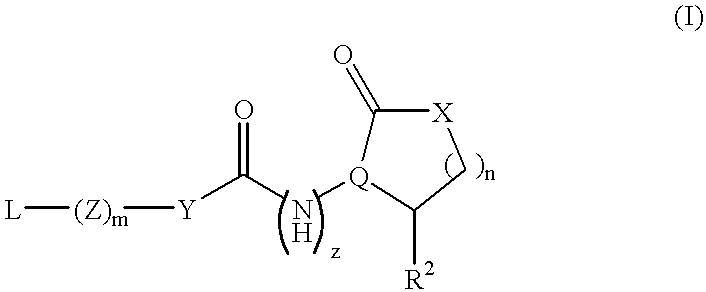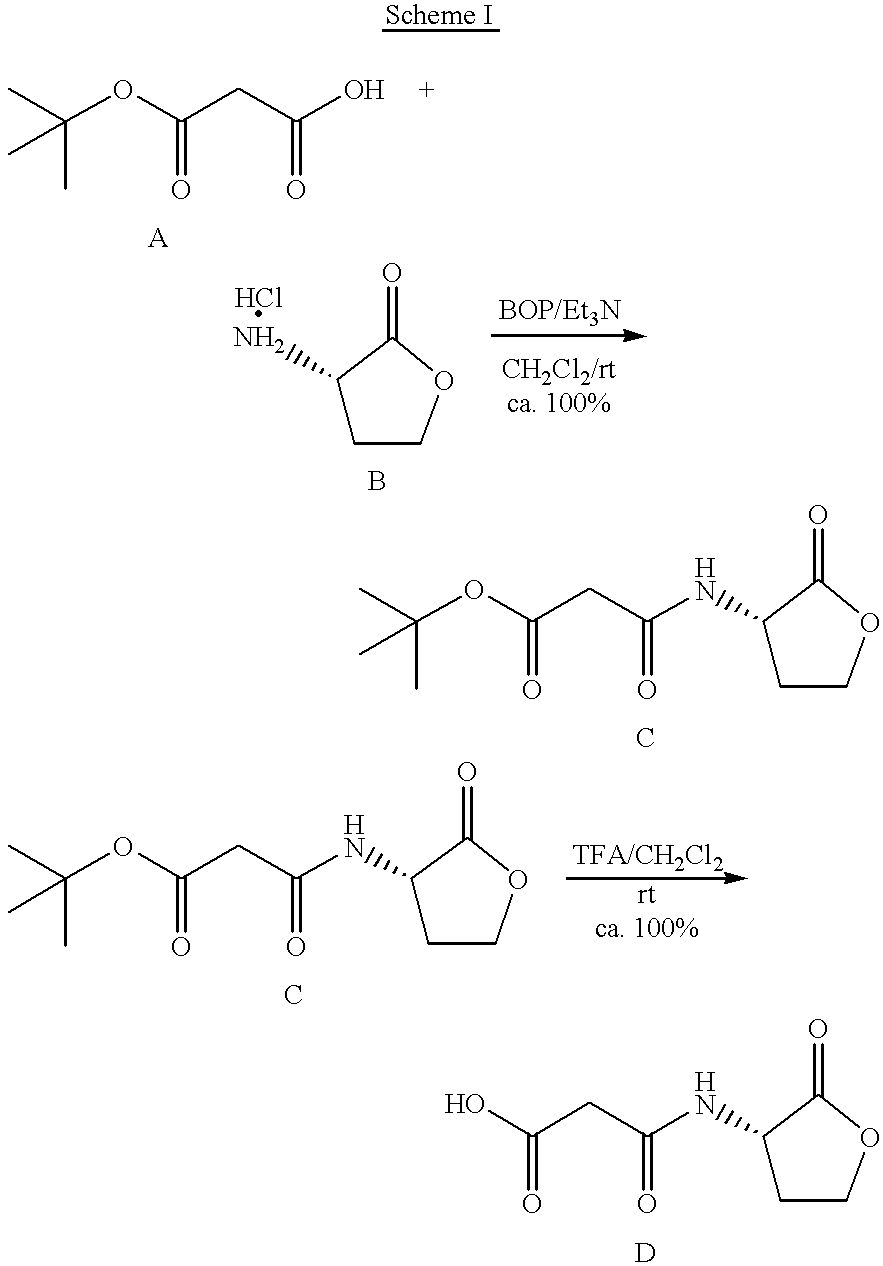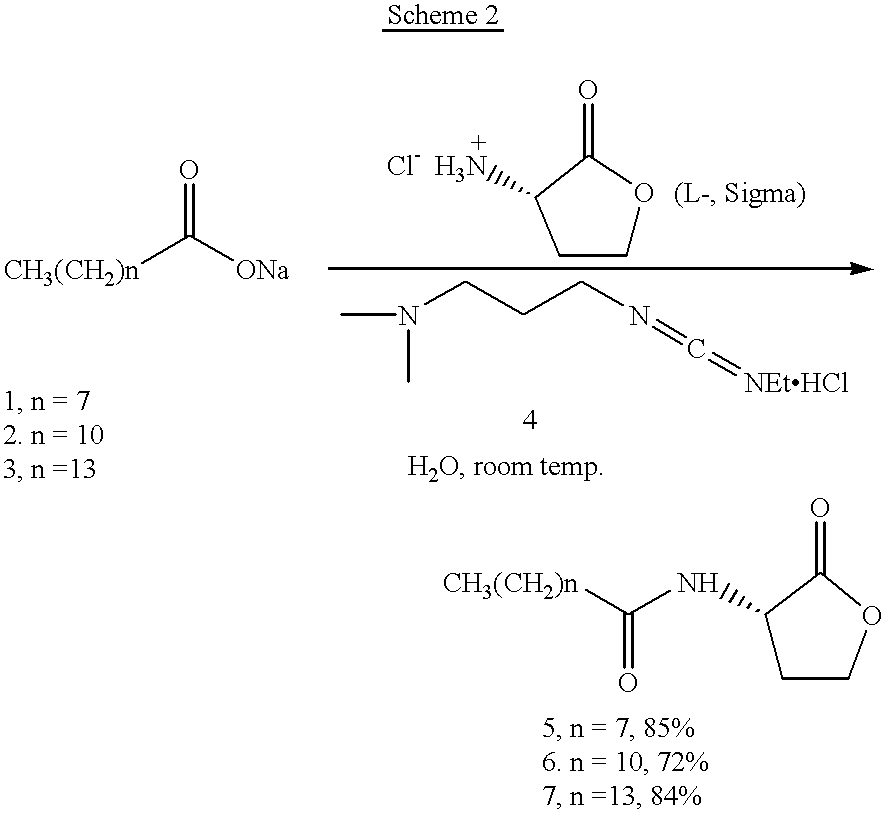Immunogenic conjugates of Gram-negative bacterial autoinducer molecules
a technology of autoinducer molecules and conjugates, which is applied in the field of immunogenic conjugates of gram-negative bacterial autoinducer molecules, can solve the problems of lysis of bacteria, failure to harness the potential long active immune response, and diagnostic assays failing to provide prophylactic or therapeutic benefits to individuals exposed to autoinducer-producing gram negative bacteria
- Summary
- Abstract
- Description
- Claims
- Application Information
AI Technical Summary
Problems solved by technology
Method used
Image
Examples
Embodiment Construction
The present invention provides for the production of immunogenic conjugates of autoinducers and immunogenic conjugates for use as vaccines or for production of antibodies useful for immunotherapy or diagnostic assays.
Solely for ease of explanation, the description of the invention is divided into the following sections: (A) isolation of homoserine lactones; (B) conjugation of autoinducers to immunogenic carriers; (C) generation of antibodies to BAI immunogenic conjugates; (D) therapeutic uses of immunogenic conjugates or antibodies thereto; (E) diagnostic assays.
5.1 Isolation and Synthesis of Homoserine Lactones
Autoinducers of Gram negative bacteria can be isolated and purified by various methods known in the art. Purification of homoserine lactones through chemical methods can be used to isolate naturally produced autoinducers. The autoinducer N-(.beta.-ketocaproyl) homoserine lactone has been purified from a culture supernatant of Erwinia carotovora (Bycroft et al., U.S. Pat. No. ...
PUM
| Property | Measurement | Unit |
|---|---|---|
| pore-size | aaaaa | aaaaa |
| cell density | aaaaa | aaaaa |
| concentration | aaaaa | aaaaa |
Abstract
Description
Claims
Application Information
 Login to View More
Login to View More - R&D
- Intellectual Property
- Life Sciences
- Materials
- Tech Scout
- Unparalleled Data Quality
- Higher Quality Content
- 60% Fewer Hallucinations
Browse by: Latest US Patents, China's latest patents, Technical Efficacy Thesaurus, Application Domain, Technology Topic, Popular Technical Reports.
© 2025 PatSnap. All rights reserved.Legal|Privacy policy|Modern Slavery Act Transparency Statement|Sitemap|About US| Contact US: help@patsnap.com



